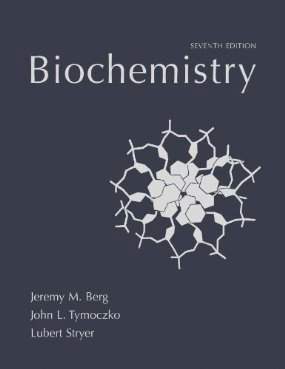Connecting...

For more information, please see full course syllabus of Biochemistry
Biochemistry Peptides & Proteins
When amino acids are linked together in chains by peptide bonds, they form proteins (more than 10,000 amu) and peptides (less than 10,000 amu). Peptide bonds form between the carbonyl carbon of one amino acid and the nitrogen of another in a hydrolysis reaction. This requires catalysis as the equilibrium of this reaction lies to the left (free amino acids). This lecture includes examples of how to build proteins as well as discussing shapes and line structures. Peptide bonds are very stable with average half-lives of 7 years. Small proteins can have just as much biological activity as large ones. Some proteins have prosthetic groups, and metalloproteins such as the enzyme carbonic anhydrase contain metal ions. Proteins have a primary, secondary (alpha-helix and beta-pleated sheet), tertiary, and quaternary structure.
Share this knowledge with your friends!
Copy & Paste this embed code into your website’s HTML
Please ensure that your website editor is in text mode when you paste the code.(In Wordpress, the mode button is on the top right corner.)
- - Allow users to view the embedded video in full-size.










































 Answer Engine
Answer Engine




1 answer
Sat Aug 15, 2015 12:46 AM
Post by shashikanth sothuku on August 13, 2015
Hello professor
during peptide bond formation for the nitrogen to act as a nucleophile should it lose a hydrogen
1 answer
Wed Feb 5, 2014 12:22 AM
Post by Alan Delez on February 4, 2014
Hi Dr. Raffi,
You mentioned physiological conditions. What criteria does the environment have to be in order to be in those conditions?
Alan D.
1 answer
Tue Jan 28, 2014 2:49 AM
Post by crystal harnick on January 27, 2014
Hi Professor,
I believe that Tyrosine is drawn wrong in this example. One of the carbons has five bonds. I think it needs to be CH2 instead of CH3.
1 answer
Mon Sep 16, 2013 5:43 AM
Post by Yvonne Kum on September 15, 2013
Hi prof, could you please explain how many chiral centers each amino acid structure have, particularly when they form a peptide bond?
Thanks,
Yvonne
1 answer
Thu Sep 12, 2013 5:02 PM
Post by Vineet Kumar on September 10, 2013
please fix this video. I pay top dollar for this website and it doesn't work when I need it to